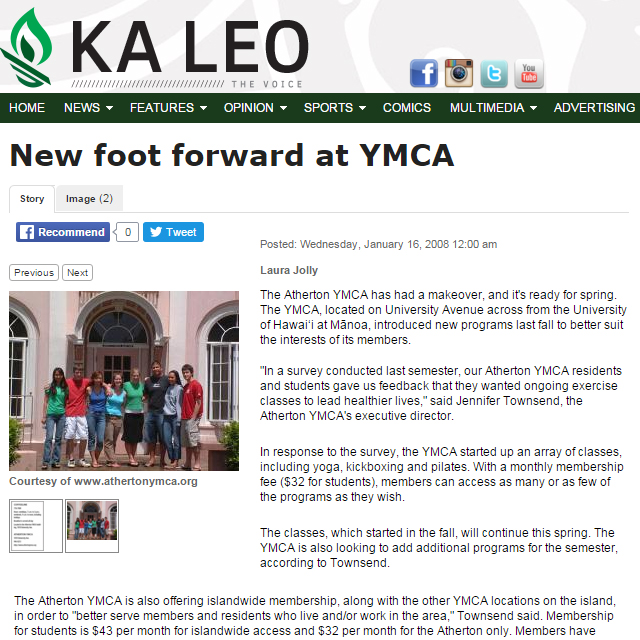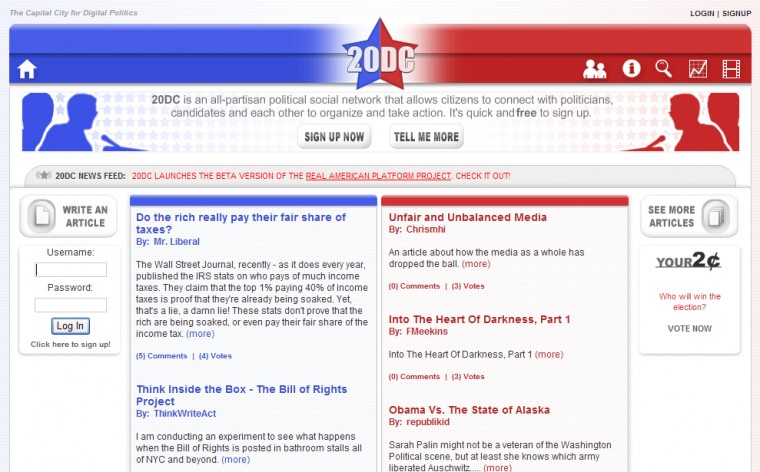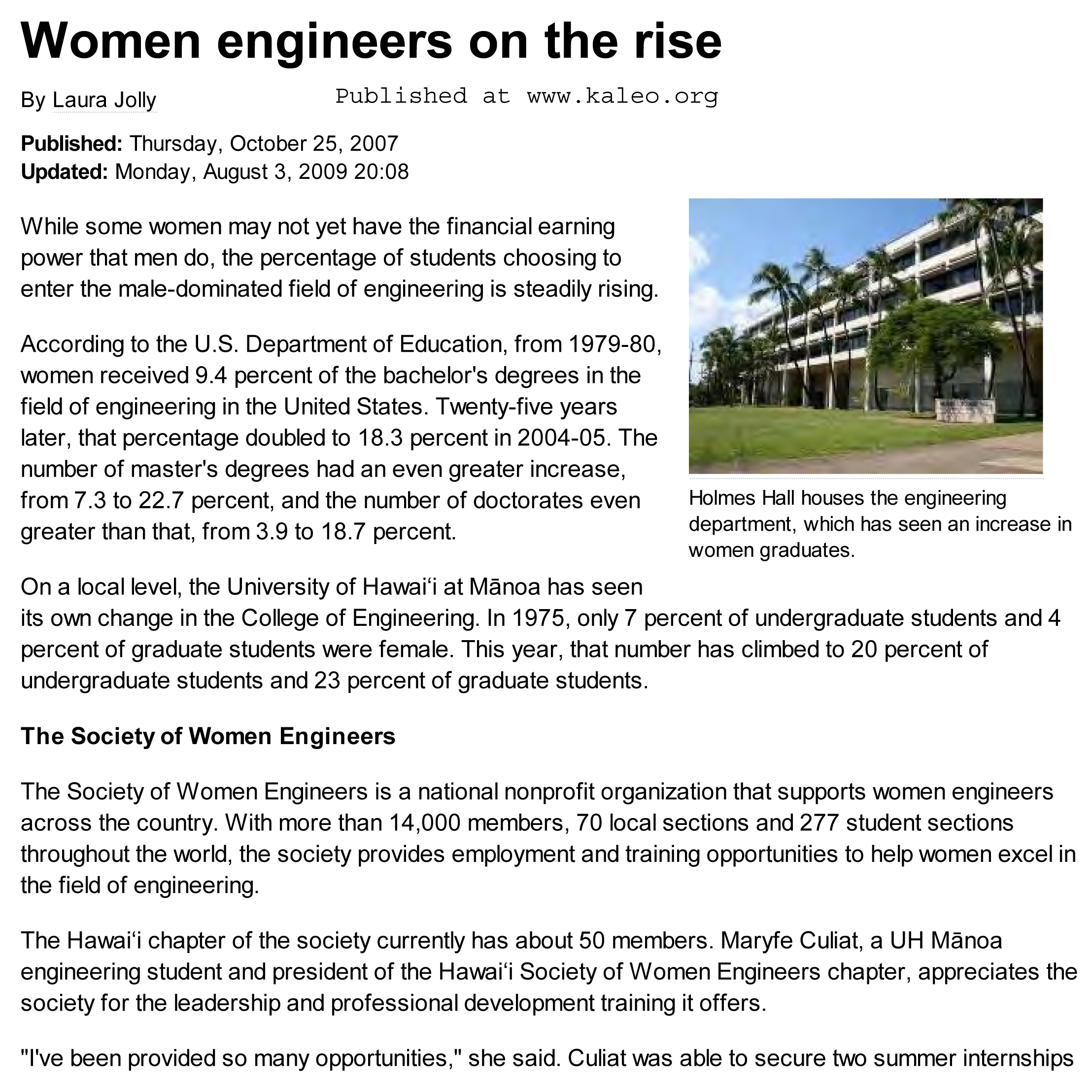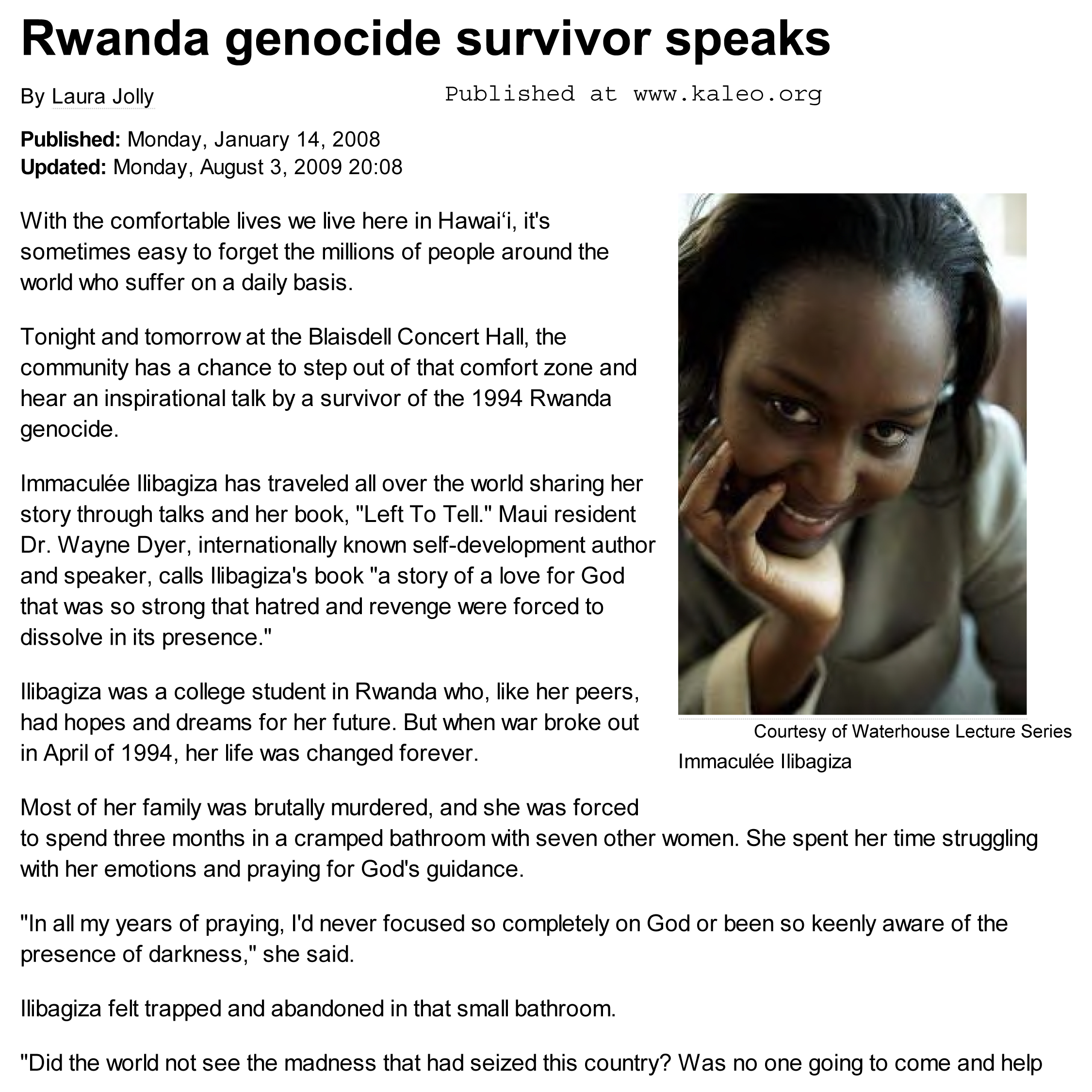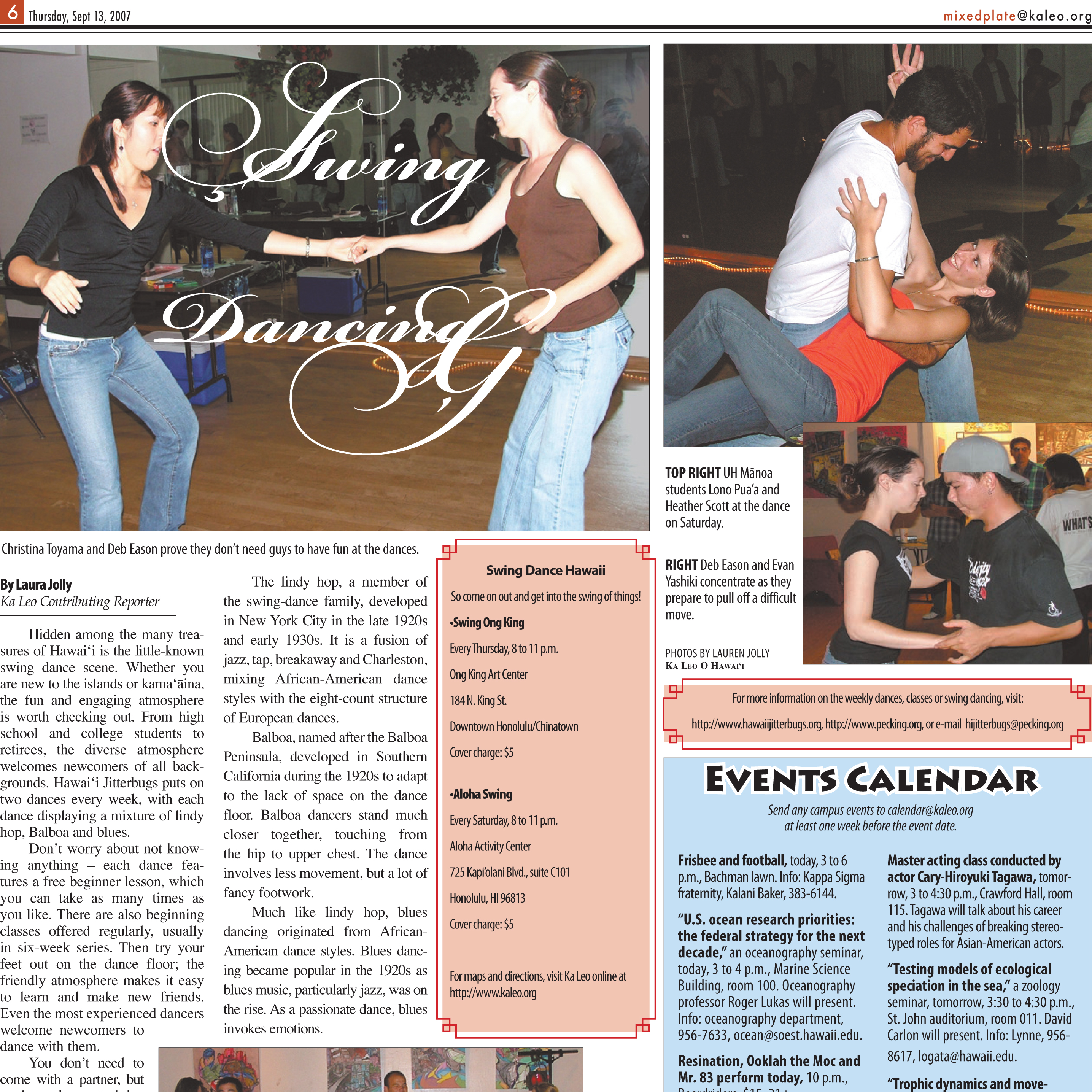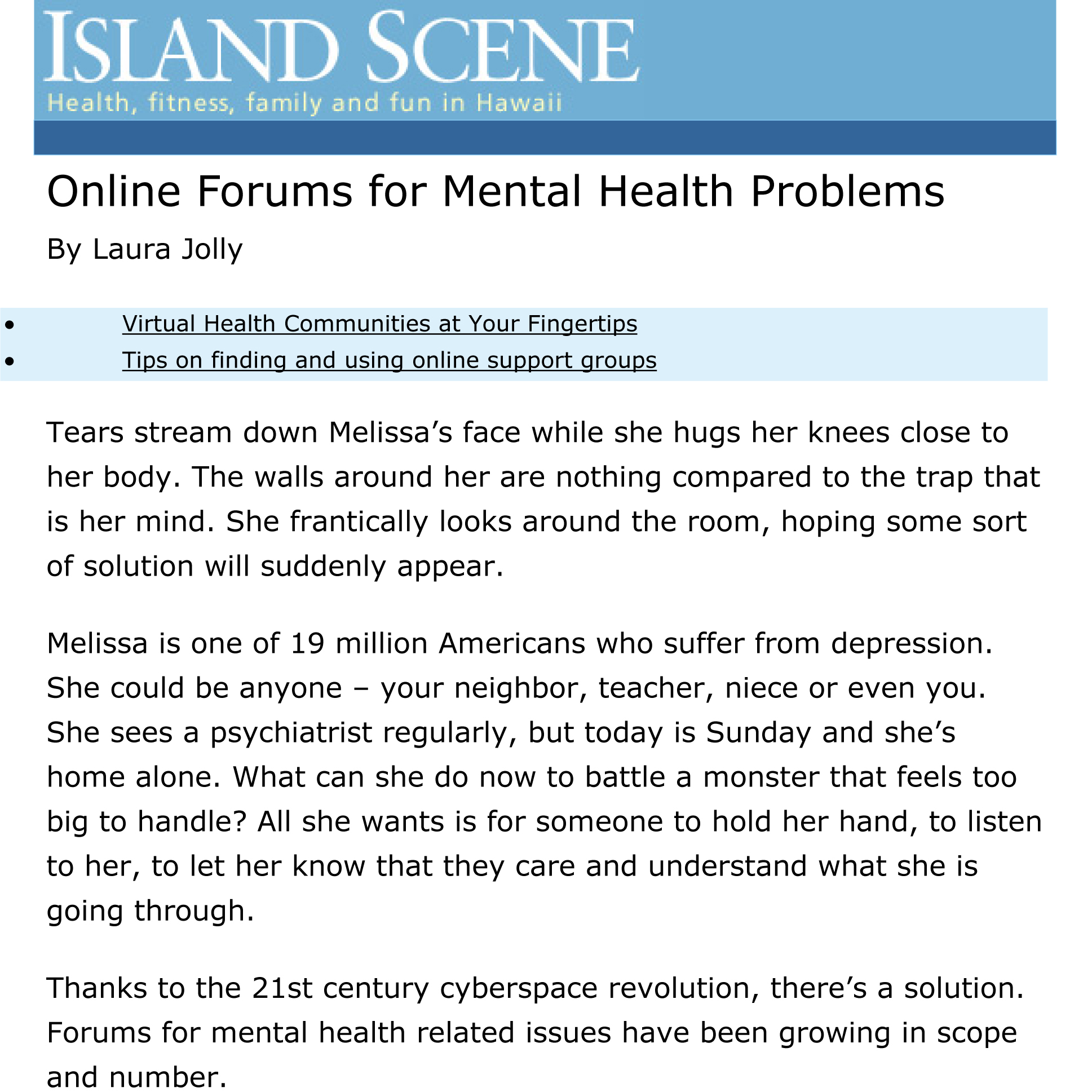Originally published in Ka Leo, UH Mānoa’s student-run newspaper – January 16, 2008
NEW FOOT FORWARD AT YMCA (View online at kaleo.org)
The Atherton YMCA has had a makeover, and it’s ready for spring. The YMCA, located on University Avenue across from the University of Hawai‘i at Mānoa, introduced new programs last fall to better suit the interests of its members.
“In a survey conducted last semester, our Atherton YMCA residents and students gave us feedback that they wanted ongoing exercise classes to lead healthier lives,” said Jennifer Townsend, the Atherton YMCA’s executive director.
In response to the survey, the YMCA started up an array of classes, including yoga, kickboxing and pilates. With a monthly membership fee ($32 for students), members can access as many or as few of the programs as they wish.
The classes, which started in the fall, will continue this spring. The YMCA is also looking to add additional programs for the semester, according to Townsend.
The Atherton YMCA is also offering islandwide membership, along with the other YMCA locations on the island, in order to “better serve members and residents who live and/or work in the area,” Townsend said. Membership for students is $43 per month for islandwide access and $32 per month for the Atherton only. Members have access to all the programs offered by the YMCA.
The YMCA now restricts the use of the facilities to YMCA activities. Organizations that previously used the YMCA, such as dance and exercise classes, had to relocate.
Townsend responded, “As part of the community spirit, we have invited all groups who have rented the studio from us in the past to apply for instructor positions.”
With this new centralized focus, the YMCA hopes to expand within the community.
“Our goal is to reach out more into our local community and to better serve the needs of the Atherton residents,” Townsend said.
To view a current calendar of programs offered by the Atherton YMCA, visit http://www.athertonymca.org.
Coffeeline
Hidden within the Atherton YMCA building is the Coffeeline, a café-style restaurant with decent prices and homemade food.
Dennis Suyeoka, the owner and sole employee of the Coffeeline, has been there since 1993. The Coffeeline was open intermittently from 1986 until 1993, when Suyeoka bought it, and has been open every day since.
“I’m even here on holidays,” Suyeoka said.
Suyeoka takes the orders, makes the food and washes the dishes. He prefers to work alone. He has had students work for him in the past, but it’s just a hassle, he said, between the class schedules, final exams and hygiene issues with student help.
“I haven’t made more money,” he said.
Suyeoka does not advertise, and there is no sign outside. The Atherton YMCA is not licensed for food sale, but Suyeoka obtained permission from the City and County of Honolulu to operate as long as he doesn’t advertise. He doesn’t seem to mind, saying, “I think advertising is a waste of money.”
The atmosphere of the Coffeeline is relaxed and artistic. The walls are adorned with paintings and pictures, and the small restaurant area is scattered with tables, chairs and plants. Students and faculty read, study and chat while they eat their food.
“It’s like walking into someone’s house,” said Loraine Ho, an English major at UH Mānoa. “It was really surreal.”
About 90 percent of the customers are faculty, according to Suyeoka.
“I’m the de facto faculty club,” he said. “But since Volcano Joe’s has closed next door, I’ve had more students coming in.”
With decent food and a study-friendly atmosphere, the Coffeeline could become the new study spot for students and faculty alike.


